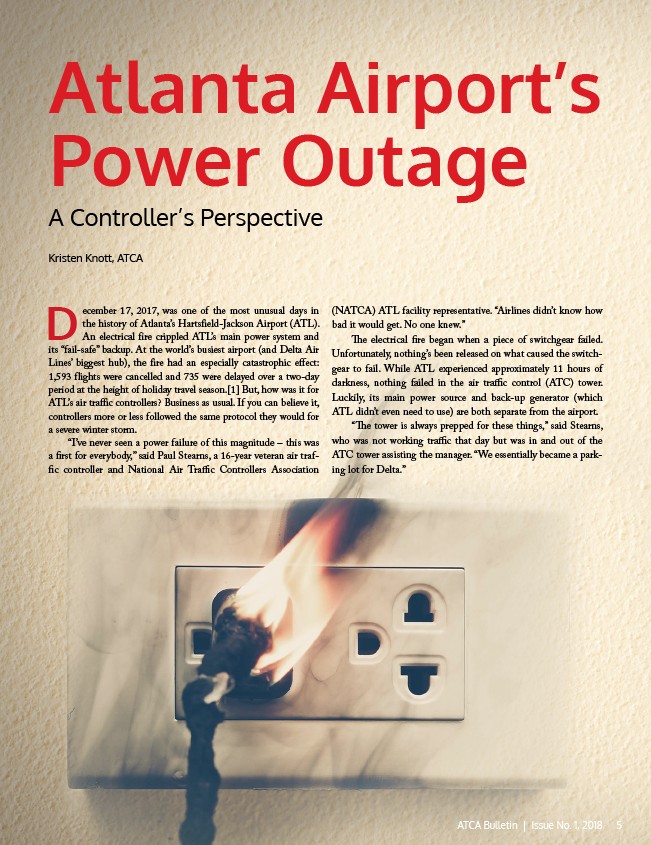
Atlanta Airport’s
Power Outage
A Controller’s Perspective
Kristen Knott, ATCA
December 17, 2017, was one of the most unusual days in
the history of Atlanta’s Hartsfield-Jackson Airport (ATL).
An electrical fire crippled ATL’s main power system and
its “fail-safe” backup. At the world’s busiest airport (and Delta Air
Lines’ biggest hub), the fire had an especially catastrophic effect:
1,593 flights were cancelled and 735 were delayed over a two-day
period at the height of holiday travel season.1 But, how was it for
ATL’s air traffic controllers? Business as usual. If you can believe it,
controllers more or less followed the same protocol they would for
a severe winter storm.
“I’ve never seen a power failure of this magnitude – this was
a first for everybody,” said Paul Stearns, a 16-year veteran air traf-fic
controller and National Air Traffic Controllers Association
(NATCA) ATL facility representative. “Airlines didn’t know how
bad it would get. No one knew.”
The electrical fire began when a piece of switchgear failed.
Unfortunately, nothing’s been released on what caused the switch-gear
to fail. While ATL experienced approximately 11 hours of
darkness, nothing failed in the air traffic control (ATC) tower.
Luckily, its main power source and back-up generator (which
ATL didn’t even need to use) are both separate from the airport.
“The tower is always prepped for these things,” said Stearns,
who was not working traffic that day but was in and out of the
ATC tower assisting the manager. “We essentially became a park-ing
lot for Delta.”
ATCA Bulletin | Issue No. 1, 2018 5